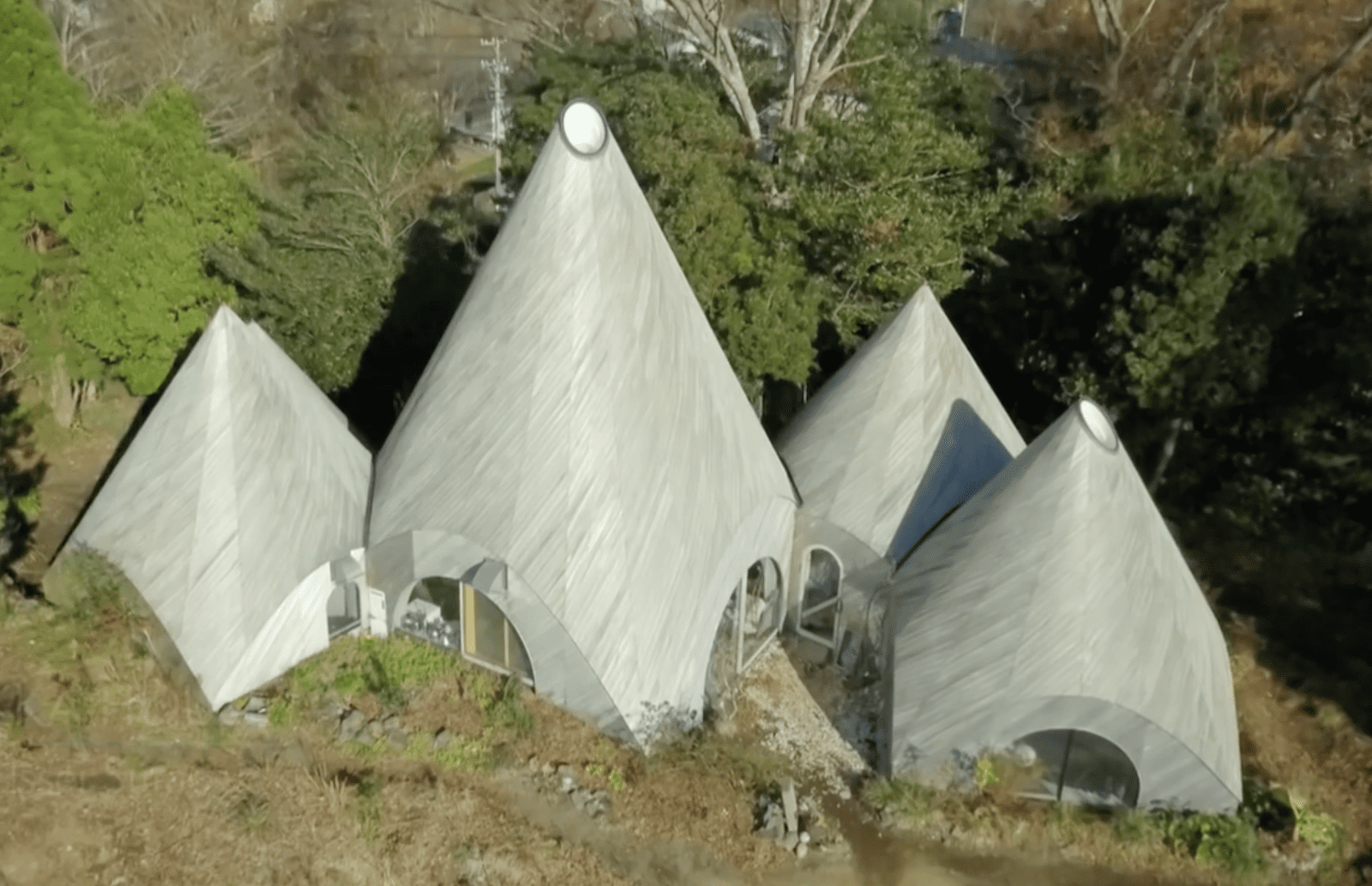
The five wooden teepee structures, nestled together on a hillside in Japan’s Shizuoka prefecture, look like a magical village, perhaps inhabited by fairies.
But the buildings are actually the result of a collaboration between two women, one a former chef and one a social worker, who set out to build their dream retirement home.
Dubbed ‘Jikka’, which means ‘parents’ home’ in Japanese, the home has no comparison in Australia. It reveals what is possible with imagination and the understanding that older people can still appreciate beauty, be nourished by being in nature, and can enjoy delicious fresh food and company, just like the rest of us.
Nobuko Suma and Sachiko Fujioka worked together in Japan’s social services for a quarter of a century. Now in their 60s, the idea came about when they began talking about how their two families could help each other and care for older people in their community.
They also began thinking about where and how they themselves would like to live as they grew older.
As luck would have it, Nobuko’s son is architect Issei Suma, and in 2014 they commissioned him to build a home where they could live a dignified and creative life to the end.
Located outside the city on rich soil, the home has been designed to be adaptable for a variety of uses, with architectural beauty, but ‘down to earth’ simplicity.
The home has no stairs throughout, and the famous spiral bath is wheelchair accessible. Surrounded by large windows looking out to the lush green forest around, bathers are treated to a soothing and satisfying experience, providing the opportunity to continue deriving deep enjoyment from life, even as they grow older.
In their former working lives, Suma and Fujioka delivered lunches to people living with disabilities. Jikka was built with surrounding vegetable gardens and extensive cooking facilities, and now the two prepare meals for local older people and serve them on site.
Nursing and palliative care services are also provided in the cabins.
The five units that make up Jikka are made of wood that is weathering to a soft, silvery grey. The home provides older people with a restoring connection to nature. The peaked chambers echo the shapes of the surrounding mountains, and the high ceilings and large windows mean the interiors are flooded with abundant natural sunlight.
The home featured on Netflix’s ‘The world’s most extraordinary homes’, and viewers reported its beauty brought them to tears.
Suma designed the buildings as the women wanted, simple and without embellishment, and with a ‘back to nature’ ethos.
Suma told CNN, “It might make sense that a person that might move out here and live here in a primitive hut, by the end of their life they can somehow grow up to the roof to the ceiling to the sky.
“And maybe to heaven.”
This small home gives us inspiration for new ways to enable older people to continue living rewarding lives, with dignity and genuine enjoyment.
Wouldn’t it be wonderful if aged care was something we could all look forward to, rather a sentence to be dreaded?
What a joy to read about!!!
Looks delightful! No stairs, privacy, family oriented.
How beautiful! If only we had this model in Aust!
What a heavenly place to live, I especially loved the spiral bath, so easy to get into and out of .
Wonderful project, wish we could do something like this in South Africa.
Beautiful. I’d love to see homes for the aged like this in Australia. 🙂